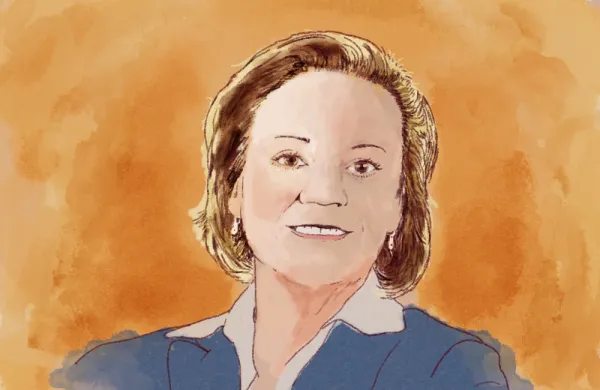I spend a lot of time (perhaps too much time) on this blog (and elsewhere) railing against the financial services industry for its outrageous fees and costs. I go to public pension off sites, sovereign fund conferences, family office events and so on in order to give the community of asset owners a singular message about the fees and costs they are paying to the finance industry: ‘You are paying too much!’
Why do I spend so much time – much of it unpaid – travelling around the world to defame financial intermediaries, you ask? Is it really because asset owners are overpaying? Actually... no. Well, that’s partially it, but there’s a deeper strategy at play here. In short, I think this issue of fees and costs can be a catalyst for a new era of professionalization among asset owners.
And for those that just returned to Earth after a trip through a black hole via a bookcase in your daughter’s room: yes, we really need more professionalization of asset owners. For finance to function effectively, pensions, endowments, and sovereign funds need to act like asset owners and behave like educated financial consumers. That’s not really happening today.
For the most part we know what we need to do to fix this problem (e.g., improve the governance of public investment organizations.) But changing governance regimes is a massive undertaking. So the more important question today is how to catalyze the sorts of changes we need. I’ve thus landed on the issue of fees and costs as the potential catalyst, but I didn’t land there first. Let me run you through some of my original logic on catalysts for change.
The first potential catalyst that I became interested in was sovereign wealth funds. These are government vehicles with considerable scale. By definition, they also don’t have explicit liabilities to any external parties. Therefore, they have an ability to take a long-term view. Perfect. Better still, there are new SWFs popping up all the time. More SWFs were created in the last decade than in all the years prior. And every time a new SWF is launched, there is a blank canvas upon which to design an optimal investment organization. With the right advice and input, we could create a generation of Giants with the ability to “do it right” and demonstrate that being a public agency does not preclude professional investment management. We were so excited by this phenomenon that we even went out and wrote a book about these funds. And I continue to work closely with a lot of SWFs today.
But while SWFs have done a lot for the in-sourcing movement among an elite group of asset owners, they haven’t really been a catalyst for change among the general population of asset owners. In fact, rather than curbing bad behavior in the financial services sector, the rise of SWFs seems to have fanned the flames of rent seeking by asset managers. The case that is perhaps emblematic of what I’m talking about involves the Libyan Investment Authority and Goldman Sachs. Rather than spend time on the details, I’ll simply share this rather choice quote which I’ve lifted directly from the pages of Forbes magazine: “F—k your mother,” Mustafa Zarti, Chairman of the LIA, screamed at two of Goldman Sachs’ bankers in Tripoli in mid-2008, after he came to believe he had been taken for a fool.” And, to give him credit, he probably was.
Long story short: SWFs will drive change in the investment business. But it’s hard to predict what kind of change that will be and whether it’s the kind of change we want. And so I began looking for a new research agenda that could serve as the appropriate catalyst for professionalization and/or re-intermediation among all the Giants. And I’ve settled on fee and cost transparency. Why? Because if asset owners knew (and desired to know) the true cost of asset management, and boards, sponsors and the public at large understood these costs coherently, then professionalization of some form or another would be inevitable. I’m not suggesting that this means in-sourcing. But I am suggesting that even an entirely outsourced operation could benefit from greater internal resources to manage the large stable of external relationships required to achieve long term objectives.
Interestingly, recent news coming out of the private equity industry on fees and costs and the behavior of asset owners in response to transparency in those fees and costs offers confirmation of this strategy. Dan Primack recently argued, “The real secret sauce in private equity partnership agreements are the dozens and dozens of pages about tax and fee structures. That’s what firms don’t want publicly disclosed. The sooner private equity’s spokesmen are honest about this, the sooner we can have a real conversation about how to move forward.” Exactly. And why are they so keen to keep their fees secret? Well, it’s not really competition from other PE managers on deals or recruiting talent; rather, the private equity industry is desperate to keep fees secret to prevent future competition from the asset owners! And it turns out they are right to be worried. In a recent WSJ article, it’s laid out explicitly: “...the world’s largest investors, including pension funds and sovereign-wealth funds, are seeking new ways to invest in private equity to avoid the supersize fees.” In other words, after seeing the size of fees being paid to managers, some pension funds have decided to develop internal capabilities to do things in more cost-effective ways.
And so it’s really for this reason that I spend a lot of time pushing asset owners to try to get fee and cost transparency. I tell them that fee structures have the potential to dampen the true volatility (risk) of certain asset classes, which means they may not only be misunderstanding fees and costs but also risks. I remind them that in a low return environment, saving even a few bps actually does matter (especially when compounded over years to come.) I warn them that paying overly generous fees to managers today is a recipe for paying even higher fees in the future (as managers consolidate and then wield power.) And so on.
And all that is true! But I want to underscore that underpinning my fee and cost project is a broader strategy. I want to provide plan sponsors, boards, stakeholders and anybody else with ammunition for the professionalization and re-intermediation of institutional investment. Again, only a small subset of funds are going to build up direct investment capabilities; but all funds can use this issue as a reason to be more creative and wield their own market power to maximize long term alignment of interests and thus returns.
In sum, we need to make the case that a better understanding of the fees and costs is akin to a better understanding of the ingredients in your food. We want investors shopping at “Whole Finance”! And if they end up growing their own ingredients, more power to ‘em.






